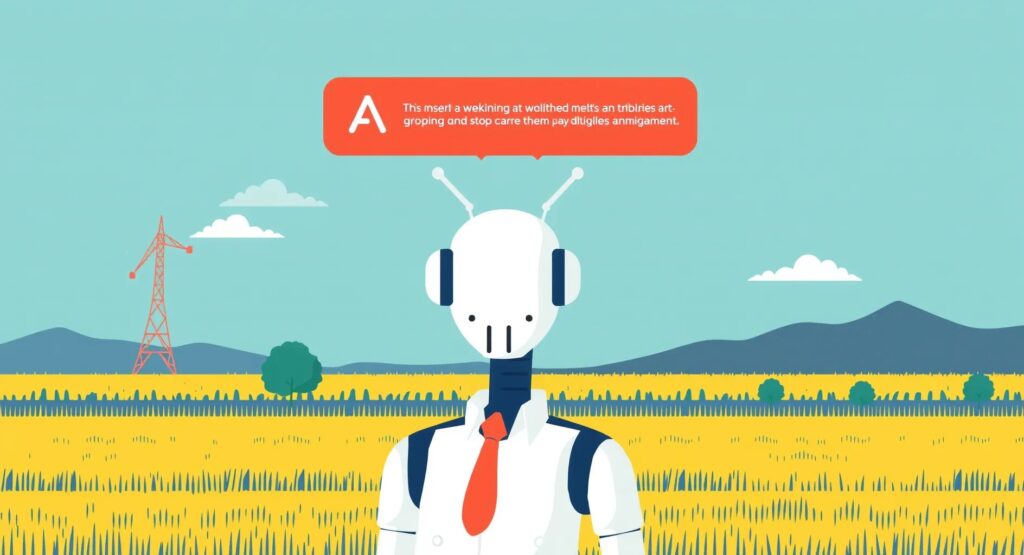
The Growing Influence of AI in Daily Life
Imagine waking up one day to a world where algorithms dictate almost every aspect of your existence—from the news you read to the decisions about your health care. Sounds futuristic, right? Well, we’re already living in it. AI’s reach extends far beyond just smart home devices and personalized ads. It’s shaping financial markets, influencing political campaigns, and even determining who gets a job interview. As AI becomes more embedded in our daily routines, the need for governance is growing louder.
But what does governance look like in a world where technology evolves faster than regulations? The crux of the matter lies in who gets to decide the rules—who holds the power to control the algorithms that now drive so much of our lives.
Why AI Governance Matters Now More Than Ever
The call for AI governance isn’t just about avoiding dystopian futures; it’s about ensuring that the technology benefits everyone, not just a select few. With the rapid development of AI comes a parallel surge in concerns over issues like bias, privacy, and security. If left unchecked, AI could reinforce inequalities, infringe on rights, and create a digital divide that’s nearly impossible to bridge.
Governance, in this context, isn’t just about writing new laws. It’s about creating a system of checks and balances that can adapt to the ever-changing landscape of AI. As these technologies become more sophisticated, so too must the frameworks that oversee them.
Key Players in AI Governance: Governments vs. Tech Giants
Who should be responsible for steering the course of AI? On one side, we have governments, tasked with protecting citizens and maintaining social order. They have the authority to enact laws and regulations but often lack the technical expertise to keep pace with AI’s rapid evolution. On the other side are tech giants—companies like Google, Amazon, and Facebook—who have the innovation and expertise but may prioritize profit over public good.
This tug-of-war between public and private interests will likely shape the future of AI governance. Governments may struggle to keep up with the pace of technological advancement, while tech companies may resist regulation that could stifle innovation. Yet, collaboration between these entities might be the key to developing effective and equitable governance strategies.
The Role of Ethics in Shaping AI Policies
Amidst the technological race, there’s a growing consensus that ethics must play a central role in AI governance. Algorithms are not neutral; they reflect the values and biases of those who create them. Without a strong ethical foundation, AI could perpetuate systemic biases and exacerbate social inequalities. Ethical considerations must be woven into the very fabric of AI development and deployment, ensuring that these powerful tools serve the greater good.
The challenge, however, lies in translating ethical principles into actionable policies. It’s one thing to agree that AI should be fair and transparent, but it’s another to design systems that consistently uphold these values. Policymakers, technologists, and ethicists must collaborate to create guidelines that are not only aspirational but also practical and enforceable.
Regulating AI: The Challenges and Opportunities
Regulating AI is no small feat. The technology is complex, evolving rapidly, and often operates in a black box, making it difficult to understand and control. Yet, the need for regulation is pressing, particularly in areas like data privacy, algorithmic transparency, and accountability. The challenge is to strike a balance between fostering innovation and protecting public interests.
Opportunities abound for creating a regulatory framework that promotes responsible AI development. By setting clear standards and encouraging best practices, regulators can help mitigate risks while allowing for continued technological advancement. However, this requires a deep understanding of the technology, as well as a commitment to ongoing dialogue between stakeholders.
Global Efforts Towards AI Governance: A Fragmented Landscape
AI governance is not just a national issue; it’s a global one. Different countries are approaching AI governance in various ways, leading to a fragmented landscape of policies and regulations. The European Union, for example, has taken a proactive stance with its AI Act, which seeks to set clear rules for AI systems based on their level of risk. Meanwhile, other regions lag behind, struggling to establish even basic guidelines.
This lack of global consensus poses significant challenges. Inconsistent regulations can lead to loopholes and disparities, where AI companies may operate under different standards depending on their location. To effectively govern AI on a global scale, international cooperation and harmonization of policies are essential. Without it, we risk creating a patchwork of regulations that fail to address the global nature of AI technology.
The Power Struggle: Public vs. Private Interests
At the heart of AI governance lies a fundamental power struggle between public and private interests. On one hand, the public demands that AI systems be transparent, fair, and accountable. On the other hand, private companies, driven by profit motives, may prioritize efficiency and innovation over ethical considerations. This tension is evident in debates over data privacy, algorithmic bias, and the concentration of power in the hands of a few tech giants.
The outcome of this power struggle will shape the future of AI governance. If private interests dominate, we could see a future where AI systems are optimized for profit rather than public good. However, if public interests prevail, we might achieve a more equitable distribution of the benefits of AI. Ultimately, finding a balance between these competing forces is crucial for creating a governance framework that serves all of society.
AI Governance Frameworks: What’s Currently in Place?

Several AI governance frameworks have been proposed, each with its strengths and limitations. The European Union’s GDPR (General Data Protection Regulation), for instance, has set a global standard for data privacy, impacting how AI systems handle personal information. Other initiatives, like the OECD’s AI Principles, focus on promoting transparency, accountability, and human-centered values in AI development.
However, these frameworks are still in their infancy, and much work remains to be done. Many of them lack enforcement mechanisms, making it difficult to hold companies accountable for violations. Furthermore, as AI technology continues to evolve, these frameworks will need to be updated to address new challenges. Policymakers must remain vigilant and proactive in refining these frameworks to keep pace with the rapid advancement of AI.
The Impact of AI on Privacy and Human Rights
One of the most pressing concerns in AI governance is the impact on privacy and human rights. AI systems often rely on vast amounts of data, including personal information, to function effectively. This raises significant privacy concerns, particularly when data is collected and used without individuals’ consent. Moreover, AI’s ability to analyze and predict human behavior could lead to unprecedented levels of surveillance and control.
Protecting privacy and human rights in the age of AI requires robust governance mechanisms. These should include strict data protection laws, transparency requirements, and safeguards against the misuse of AI for purposes like discrimination or social control. Ensuring that AI serves to enhance rather than erode human rights is a critical challenge for policymakers and technologists alike.
AI and the Law: Navigating Uncharted Legal Territory
AI has thrown us into a new legal frontier where traditional laws struggle to keep pace with technological advancements. Existing regulations often fall short when it comes to addressing issues like algorithmic decision-making, autonomous systems, and the liability for AI-induced harm. As AI systems take on more significant roles in areas like healthcare, finance, and law enforcement, the need for updated legal frameworks becomes increasingly urgent.
Legal scholars and policymakers are grappling with questions like: Who is responsible when an AI system makes a mistake? How do we ensure that AI-driven decisions are fair and transparent? Crafting new laws that address these challenges is not just a matter of tweaking existing regulations; it often requires a complete rethinking of how we approach responsibility and accountability in a world where machines can make autonomous decisions.
Emerging Technologies and the Need for Adaptive Governance
AI is just one piece of the broader puzzle of emerging technologies that include blockchain, quantum computing, and biotechnology. Each of these technologies presents unique governance challenges, but they also intersect in ways that complicate regulatory efforts. For example, blockchain technology’s potential to ensure transparency in AI decision-making is promising, but it also introduces complexities in terms of data privacy and security.
The speed at which these technologies evolve demands a governance approach that is not only robust but also adaptive. Traditional regulatory models, which tend to be reactive and slow-moving, may not be sufficient to keep up with the rapid pace of technological change. Instead, we need dynamic governance frameworks that can quickly respond to new developments while ensuring that the fundamental principles of fairness, accountability, and transparency are upheld.
Public Awareness and the Demand for Transparent AI Practices
As AI continues to integrate into more aspects of daily life, public awareness of its implications is growing. People are becoming increasingly concerned about how their data is being used, the fairness of AI-driven decisions, and the potential for AI to infringe on their rights. This rising awareness is driving a demand for greater transparency in AI practices.
Transparent AI means more than just making algorithms open-source or explaining how they work. It’s about ensuring that people understand how decisions that affect them are made and that they have a say in those decisions. Companies and governments alike are being called upon to adopt practices that allow for greater public scrutiny and involvement in the development and deployment of AI technologies. This push for transparency is crucial for building public trust in AI systems and ensuring that these technologies are used in ways that benefit society as a whole.
Who Should Control AI? The Debate Over Centralized vs. Decentralized Approaches
The question of who should control AI is at the heart of the governance debate. Should AI development and oversight be centralized in the hands of a few powerful entities, such as governments or large tech companies? Or should it be decentralized, with more stakeholders—including smaller companies, academic institutions, and even individuals—having a say in how AI is developed and used?
Centralized control could lead to more consistent and enforceable regulations, but it also risks concentrating too much power in the hands of a few, potentially leading to abuses of that power. On the other hand, decentralized approaches could democratize AI governance, allowing for a broader range of voices and perspectives to influence how AI evolves. However, decentralization also comes with challenges, such as the difficulty of coordinating policies and standards across different entities and regions.
This debate is not just theoretical; it has real-world implications for how AI impacts our lives. Whether AI governance is centralized or decentralized will shape who benefits from AI advancements and who is left behind.
AI in the Hands of the Few: Concentration of Power and Its Risks
As it stands, a small number of tech giants dominate the AI landscape. Companies like Google, Amazon, and Microsoft have the resources to develop cutting-edge AI technologies and the data needed to train sophisticated algorithms. This concentration of power raises significant concerns about monopolies, bias, and the potential for AI to be used in ways that prioritize corporate interests over the public good.
The risk of power being concentrated in the hands of a few is that it could lead to AI systems that serve the interests of the powerful, rather than the broader society. For instance, AI-driven advertising algorithms might prioritize profit over ethical considerations, or AI in law enforcement might disproportionately target marginalized communities. Governance structures need to address these risks by ensuring that AI development and deployment are guided by principles of equity, fairness, and accountability.
The Future of AI Governance: Predictions and Possibilities
Looking ahead, the future of AI governance is likely to be shaped by a combination of technological advances, public pressure, and policy innovations. We might see the emergence of new global standards for AI ethics and governance, similar to how the GDPR has set a benchmark for data privacy. There could also be more collaborative efforts between governments, international organizations, and the private sector to develop frameworks that balance innovation with regulation.
However, the path forward is far from clear. AI governance will need to be flexible enough to adapt to unforeseen challenges while being strong enough to protect public interests. The role of civil society in shaping this future cannot be overstated. As AI becomes an increasingly central part of our lives, it’s crucial that people from all walks of life have a voice in how it is governed. The decisions made today will have far-reaching implications for how AI impacts our world tomorrow.
How Can Individuals Influence AI Governance?
While AI governance might seem like a topic reserved for policymakers and tech experts, individuals also have a role to play. Public pressure can drive companies and governments to adopt more ethical practices, as seen in the growing demand for data privacy and transparency. By staying informed, participating in public discussions, and advocating for fair AI policies, individuals can help shape the direction of AI governance.
One way individuals can exert influence is by supporting organizations that promote responsible AI development, such as nonprofits focused on digital rights or ethical AI. Engaging in public consultations on AI policies, where citizens can provide input on proposed regulations, is another avenue for participation. Additionally, using AI technologies consciously—choosing products and services that prioritize ethical practices—can signal to companies that consumers care about how AI is governed.
Balancing Innovation and Regulation: Finding the Sweet Spot
One of the biggest challenges in AI governance is finding the right balance between fostering innovation and implementing necessary regulations. On the one hand, overly stringent regulations could stifle innovation, slowing down the development of new technologies that could bring significant benefits. On the other hand, a lack of regulation could lead to the unchecked use of AI, with potentially harmful consequences for society.
The key lies in creating smart regulations that encourage innovation while ensuring that AI technologies are developed and used responsibly. This might involve creating regulatory sandboxes—controlled environments where companies can test new AI technologies under regulatory supervision before they are rolled out more widely. It could also mean developing flexible regulations that can be adapted as new challenges and opportunities arise.
The Moral Imperative: Ensuring AI Benefits All of Humanity
At its core, the debate over AI governance is a moral one. How do we ensure that AI technologies are used to benefit all of humanity, rather than just a privileged few? This question touches on issues of fairness, equity, and social justice, and it underscores the need for a governance framework that is guided by ethical principles.
AI has the potential to solve some of the world’s most pressing problems, from climate change to global health. But to realize this potential, we must ensure that the development and deployment of AI are guided by a commitment to the common good. This means prioritizing the needs of marginalized communities, protecting human rights, and ensuring that the benefits of AI are distributed equitably across society.
As we look to the future, the moral imperative of AI governance will only become more pressing. By working together—across sectors, disciplines, and borders—we can create a governance framework that harnesses the power of AI for the benefit of all, rather than just the few.
The Path Forward: Navigating the Future of AI Governance
As we stand on the brink of an AI-driven future, the decisions we make today regarding governance will shape not only the trajectory of technology but also the fabric of our society. The rise of AI presents both incredible opportunities and significant risks, demanding a careful, collaborative approach to governance that balances innovation with responsibility.
The debate over who controls AI—whether governments, tech giants, or a more decentralized coalition of stakeholders—will continue to evolve as technology advances. However, the essence of effective AI governance lies in transparency, accountability, and a commitment to ethical principles that prioritize the public good over profit.
Individuals, too, play a crucial role in this landscape. By staying informed, participating in public discourse, and advocating for fair and equitable AI policies, we can all contribute to shaping a future where AI benefits humanity as a whole. The path forward is neither simple nor straightforward, but with thoughtful, inclusive governance, we can harness the power of AI to create a better world for everyone.
In the end, the future of AI governance will be defined not just by the rules and regulations we put in place, but by our collective willingness to ensure that these powerful technologies are used in ways that are fair, just, and beneficial to all. The challenge is immense, but so too is the potential for AI to drive positive change—if we get the governance right.
Ethics and AI: Ensuring Fairness in Algorithms
- A scholarly discussion on the ethical challenges posed by AI and the importance of embedding ethics in AI design.





